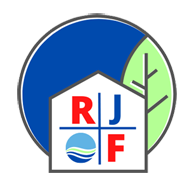The EPA has set guidelines to help you deal with water intrusions. First and foremost respond to water damage within 24-48 hours. These guidelines are designed to help avoid the need for remediation of mold growth by taking quick action before growth starts. If mold growth is found on the materials, professional assistance may be needed to dry an area quickly and thoroughly.
See this link to the EPA’s page about Mold Control for great General Information: The Key to Mold Control is Moisture Control.
See below for advice about how to clean up Water-Damaged Material†:
Books and papers:
- For non-valuable items, discard books and papers.
- Photocopy valuable/important items, discard originals.
- Freeze (in frost-free freezer or meat locker) or freeze-dry.
Carpet and backing – dry within 24-48 hours§:
- Remove water with water extraction vacuum.
- Reduce ambient humidity levels with dehumidifier.
- Accelerate drying process with fans.
Ceiling tiles:
Discard and replace.
Cellulose insulation:
Discard and replace.
Concrete or cinder block surfaces:
- Remove water with water extraction vacuum.
- Accelerate drying process with dehumidifiers, fans, and/or heaters.
Fiberglass insulation:
Discard and replace.
Hard surface, porous flooring (Linoleum, ceramic tile, vinyl)§:
- Vacuum or damp wipe with water and mild detergent and allow to dry; scrub if necessary.
- Check to make sure underflooring is dry; dry underflooring if necessary.
Non-porous, hard surfaces (Plastics, metals):
Vacuum or damp wipe with water and mild detergent and allow to dry; scrub if necessary.
Upholstered furniture:
- Remove water with water extraction vacuum.
- Accelerate drying process with dehumidifiers, fans, and/or heaters.
- May be difficult to completely dry within 48 hours. If the piece is valuable, you may wish to consult a restoration/water damage professional who specializes in furniture.
Wallboard (Drywall and gypsum board):
- May be dried in place if there is no obvious swelling and the seams are intact. If not, remove, discard, and replace.
- Ventilate the wall cavity, if possible.
Window drapes:
Follow laundering or cleaning instructions recommended by the manufacturer.
Wood surfaces:
- Remove moisture immediately and use dehumidifiers, gentle heat, and fans for drying. (Use caution when applying heat to hardwood floors.)
- Treated or finished wood surfaces may be cleaned with mild detergent and clean water and allowed to dry.
- Wet paneling should be pried away from wall for drying.
And remember these guidelines are for damage caused by clean water. Not water that has been contaminated with sewage, or chemical or biological pollutants as many flood waters are. An experienced professional should be consulted if you and/or your remediators do not have expertise remediating in contaminated water situations.
† If a particular item(s) has high monetary or sentimental value, you may wish to consult a restoration/water damage specialist.
§ The subfloor under the carpet or other flooring material must also be cleaned and dried. See the appropriate section of this page for recommended actions depending on the composition of the subfloor.

